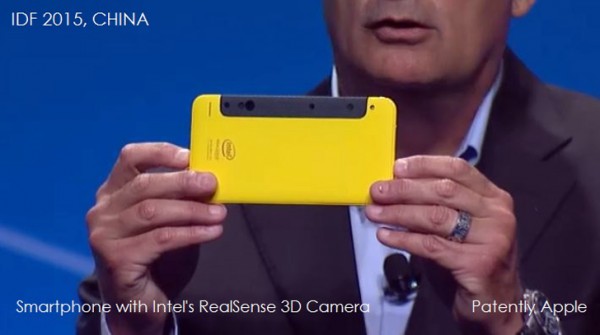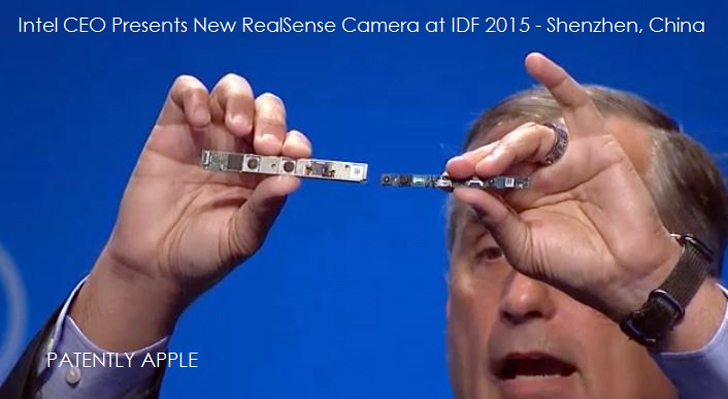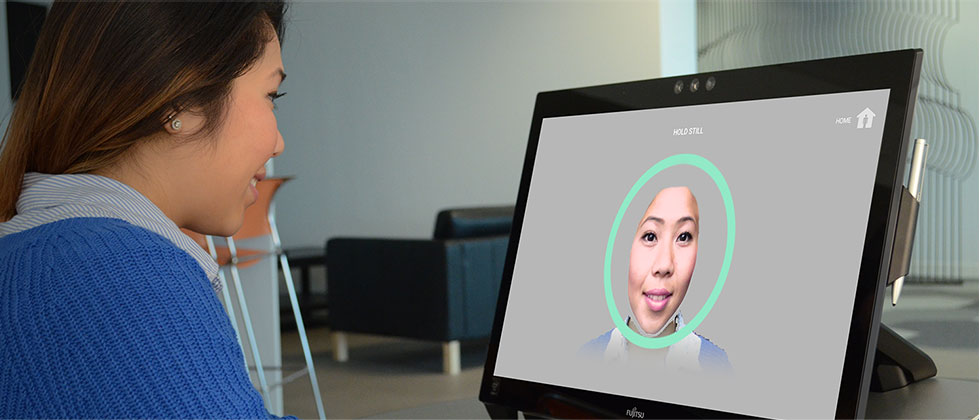3D printing technology has stepped into a new segment when the arrival of 3D scanning technology was announced. But the special thing about this announcement is that this scanning technology is being integrated in smartphones, thanks to the Intel. Now you don’t have to just take a photo and do a 2D printing, if you want to you may get a whole 3D printed bust for yourself. Intel’s 3D depth camera enables you to take images and also 3D scan those images. Chip developers have introduced the RealSense chips which can be fit into a 6″ smartphone.
Intel CEO Brian Krzanich introduced the 3D RealSense enabled smartphone at the Intel Developer Forum in Shenzhen, China. Although in the forum it was not shown functioning.
An Intel spokesperson said, “The device which was shown on stage at the Intel Developer Forum was a prototype that was created in collaboration with a Chinese firm, whom we are not naming. The device is meant to show the different types of apps, usage models and form factors that RealSense tech can be integrated into and to encourage innovation.”
Features of a RealSense camera -enabled smartphone helps you in 2 ways: 1) It allows Depth-based gesture control, 2) Capture 3D scans.
However, Google’s Tango Project is also in line as Developer’s Kit, featuring a 3D image sensor from PMD Technologies. Another company developing 3D sensors are Pelican Imaging, USA.
Intel is seemingly among the forerunners to get 3D printing technology into tablets and computers and they are used in laptops such as the Acer Aspire V 17 Nitro notebook, Lenovo B50 desktop computer, the Dell Venue 8 7000 Series table, and the HP Sprout. However, Chris Green from The Davis Murphy’s Group says, “Intel has obviously achieved half of the challenge involved – the miniaturisation – but what is still unclear is whether it has got the power side of things licked. It’s one thing putting this into a laptop where you have a large battery and access to a mains power source, it’s another to put it into a phone that has to last throughout the day.”
Few shortcomings such as the size of the device (being 6 inches in size the device is still considered big enough as a 3D scanning device), the proper functioning of the technology, etc. were detected in the system.
We are seeing such endless innovation is branching out almost everyday at different corners of the world. And, with such interesting ideas being implemented, it won’t be wrong for an enthusiast to anticipate more sorted, stronger and powerful ideas introduced by some of the top-notch competitors like Apple and Microsoft.
So, now you can immediately get your selfie 3D printed with help of your smartphone.
We at think3D are hoping that Intel will considers these constructive criticisms and work on towards improvement of this latest innovation in the block. This will be needed so that can stand upright against any potential threats.



